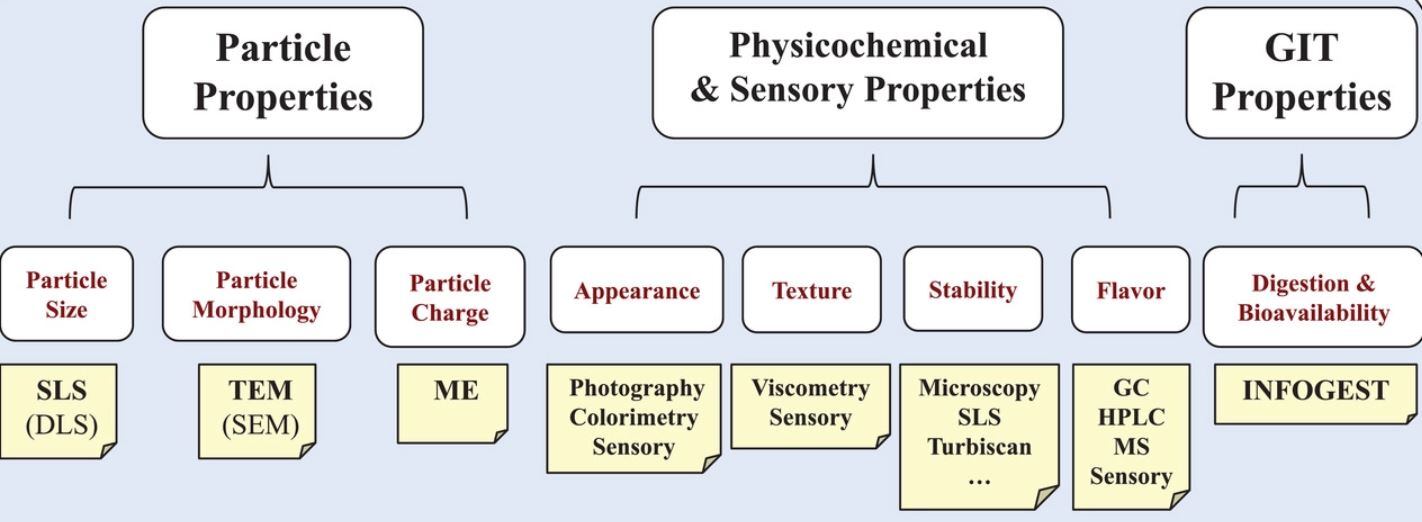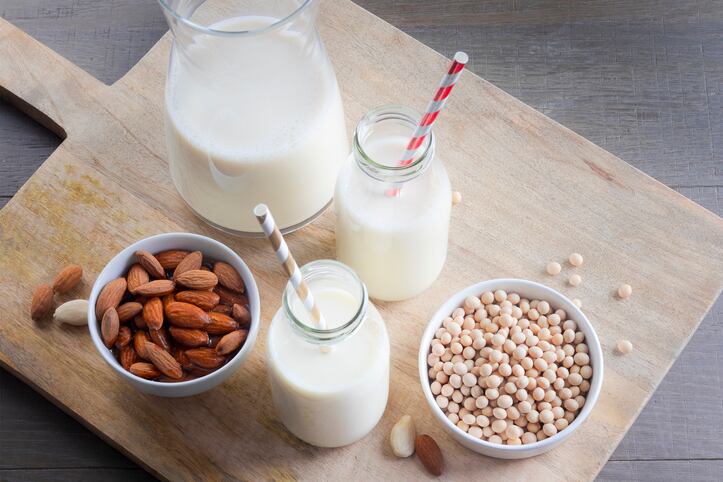There has been a surge of interest recently on the development of plant‐based milk alternatives due to increasing consumer concerns about the ethics, sustainability, and healthiness of animal‐based milks.
Consequently, producers are having to quickly develop and test new formulations to meet rising consumer demand using a range of protein sources such as soy, oat, pea, almond, coconut and flaxseed.
But a lack of standardized analytical methods and protocols is stifling successful innovation in the area, and the more widespread adoption of plant milks is being held back by products lacking the sensory attributes, stability, and functional performance of real cow’s milk.
A new study from the Department of Food Science at the University of Massachusetts, led by its British Distinguished Professor of Food Science David Julian McClements, attempts to present a set of standardized methods which if adopted would allow results from different studies to be compared. This knowledge gained from these recommended methods, the study says, may lead to the more efficient production of plant‐based milk alternatives with improved physicochemical and sensory properties.
Overcoming the curdle hurdle
The methods outlined in the research include using static light scattering (SLS) and dynamic light (DLS) scattering analysis to consistently measure the range of the many different kinds of colloidal particles found in milk alternatives to best optimize stability and functional performance.
Elsewhere, the paper notes that observing the particle charge, or electrical properties, of the particles in plant-based milk is key, since if they lose their charge, they may aggregate and give an undesirable, or clumpy, appearance.
Coffee, for instance, is relatively acidic (around pH 5). “Therefore, adding protein‐coated fat droplets that lose their electrical charge around this pH to a hot beverage can promote aggregation and an unsightly appearance,” the study noted.
To avoid the problem of a plant milk curdling your consumer’s coffee, the study recommends the use of microelectrophoresis analysis -- a method of studying electrophoresis of various dispersed particles under a microscope -- to most accurately characterize the electrical properties of plant‐based milk alternatives.

How best to address the taste and texture challenges of plant-based milk?
The research goes on to reveal that many consumers report the flavour of plant‐based milks have undesirable notes, such as “beany,” “bitter,” “astringent,” “grassy,” or “rancid”. They also often complain of “mouthcoating,” “thickness,” “chalky,” “oily,” and “drying” when describing the mouthfeel of vegan milks.
Sensory analysis, including descriptive analysis and hedonic testing – which typically asks the consumer to order the samples based on preference -- can help to better characterize the sensory attributes of products and assess consumer acceptance respectfully, according to the researchers.
“Trained panels can explore if changes in processing or modifications in ingredients, such as the addition of flavours, can result in a more desirable sensory profile,” they wrote. “This can indicate if plant‐based milk alternatives more closely match cow's milk or another target commercial product.”
Often, reducing an undesirable attribute like “beany flavour” may suggest an increase in consumer liking; however, descriptive analysis studies cannot provide information regarding consumer liking, said the researchers. They suggested separate hedonic sensory studies are also required to assess liking (including taste and flavour) and overall consumer acceptance.
The academics also revealed some common mistakes made by trained panels.
- Trained panel is not appropriate for hedonic evaluation: Trained panels undergo hours of training to become familiar with the product category and specific sensory attributes in a quantitative manner. Therefore, asking trained panellists to make ratings on liking is inappropriate as they are not free of bias nor should they be considered an average consumer. Moreover, the relatively small number of members in a trained panel is not enough to draw conclusions regarding product acceptance in the market.
- Not selecting the proper control sample: Interpretation of the results is dependent on the selection of an appropriate control sample, which is determined by the objective of the study. For plant‐based milks, this may be a conventional milk product with a specific fat content, or another well‐liked commercial plant‐based product. In a hedonic study, selecting a control product that is not well liked can lead to inaccurate conclusions.
- Too few consumers to evaluate acceptability: It is desirable to include a large number of consumers (around 60) to best capture the general acceptance of the product. Additionally, selecting the right consumers (e.g., demographic, potential consumer/buyer) will be a better estimate of acceptability. The market is changing, with more consumers looking for plant‐based alternatives. Understanding whether the target consumers are willing to change and accept novel sensory attributes is also important to consider, or if they desire products to mimic fluid milk.
Sensory and descriptive analysis can only go so far
The study added that sensory analysis is not practical during all stages of product development because it is expensive, time‐consuming, and subjective. It therefore recommended instrumental methods should also be used to determine the flavour attributes of plant‐based milk alternatives.
These techniques include gas chromatography (GC) -- widely used in the food and drink industry as a way to rapidly separate and detect the volatile organic components of a food or drink; mass spectrometry (MS) methods, which are typically used to identify and quantify compounds and determine structure and chemical properties of molecules; and olfactometry methods, which are used to determine which aroma compounds are likely to contribute to the aroma of a food and drink.
“As novel plant proteins continue to emerge, there is a strong advantage of integrating physicochemical analysis with sensory techniques. In an ideal world, initial assessments using a variety of analytical techniques can methodically assess the different functional attributes of plant‐based materials,” the study said.
“Samples can then be sensory tested using a trained panel to quantify the sensorial attributes to articulate how well these plant‐based foods/milks resemble the control. Finally, the use of hedonic and/or preference testing can then measure overall consumer acceptability of new plant‐based milks.”
Reference
Standardized methods for testing the quality attributes of plant‐based foods: Milk and cream alternatives
Comprehensive Reviews In Food Science and Food Safety
Authors: Lutz Grossmann, Amanda J. Kinchla, Alissa Nolden, David Julian McClements


